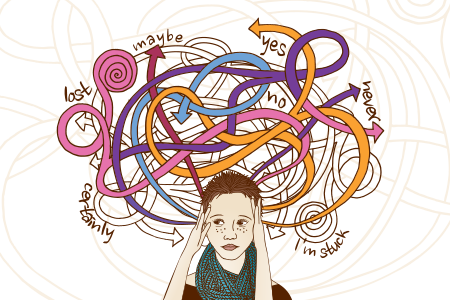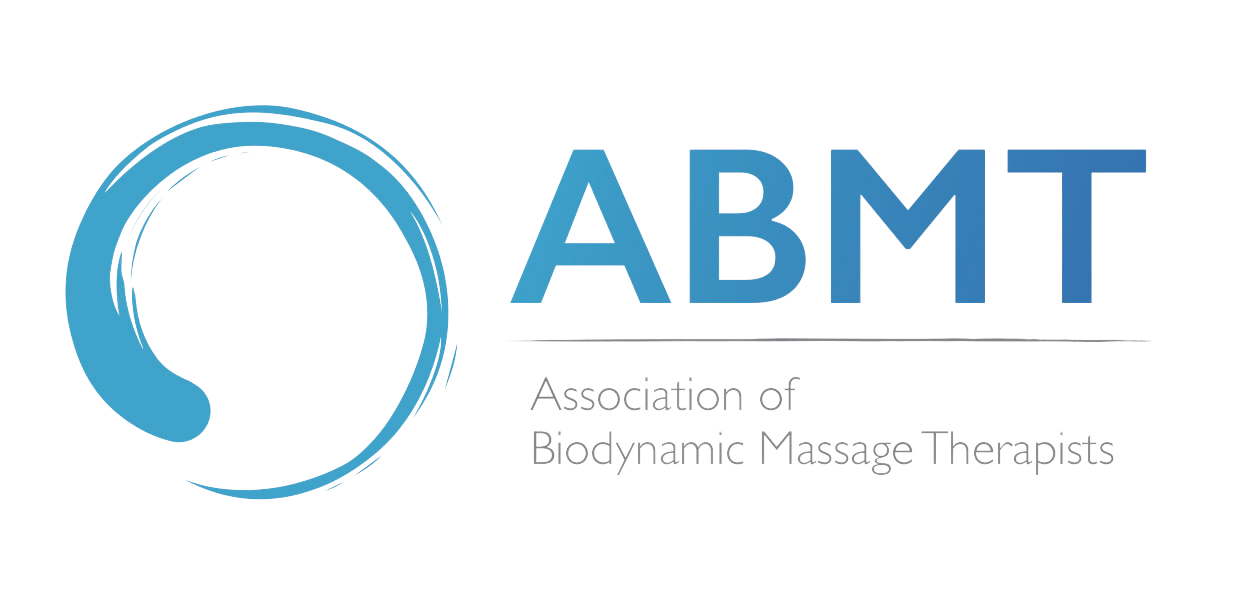Understanding the importance of connective tissue in biodynamic massage
ExpiredBiodynamic massage is based on the understanding and belief that the body reflects the totality of our life, the sum of our experience and how we relate to ourselves and to the world.
Habitual ways of determining our muscle tone and shape our posture, which in turn affect our emotional and mental states, our breath, our energy levels, our nervous system, our health and the quality of our meaningful relationships.
Biodynamic massage aims to undo the holding patterns that restrict free and spontaneous self-expression, and to tone and strengthen frozen and collapsed tissues to make the body a stronger container for emotional charge and higher levels of energy. All of the techniques we use influence more or less all types of the connective tissue, either the different layers of fascia, the bone, the ligaments or the blood and the lymph. However, more attention is paid on the fascia, or myofascial system, as it is the tissue we refer to and work with mostly.
Restrictions of the fascia can create pain or malfunction throughout the body, sometimes with bizarre side effects and seemingly unrelated. It is thought that an extremely high percentage of people suffering from pain, loss of motion, or both may have fascial restriction problems. Most of these conditions go undiagnosed, however, as many of the standard tests, such as radiographs, myelograms, computerized tomographic scans, and electromyograms do not show the fascia. If we cannot see it, we cannot look for restriction with our eyes.
Touching patients with skilled hands, however, can be one of the most potent ways of locating fascial restrictions and effecting positive change (Travel, 1983). Touching patients through mobilization, massage, and various forms of exercise and movement therapy, coupled with the gentle, refined touch of myofascial release and the sophisticated movement therapy called myofascial unwinding, creates a sensorimotor interplay. This experience of contact and movement is the very experience we need to reprogram our biocomputer, the mind-body, the basis for learning any new skill. Those practicing myofascial release use the skin and fascia as a handle or lever to create new options for enhanced function and movement of every structure of the body (Barnes, 2004).
The function of Fascia
Medical literature does not suggest a sole definition of fascia, because it varies in terms of thickness, function, composition, and direction depending on its location. The fascial tissue is equally distributed throughout the entire body, enveloping, interacting with, and permeating blood vessels, nerves, viscera, meninges, bones, and muscles, creating various layers at different depths, and forming a tridimensional metabolic and mechanical matrix. The fascia becomes an organ that can affect an individual’s health. Awareness of its functions and of the areas it controls becomes significant within a more general perspective concerning the patient’s wellness and health.
Every body structure is wrapped in connective tissue, or fascia, creating a structural continuity that gives form and function to every tissue and organ. The fascial continuum is essential for transmitting the muscle force, for correct motor coordination, and for preserving the organs in their sites: the fascia is a vital instrument that enables the individual to communicate and live independently (Bordoni & Zanier, 2014).
It has been estimated that if every structure of the body except the fascia were removed, the body would retain its shape. The fascia serves a major purpose in that it permits the body to retain its normal shape and thus maintain the vital organs in their correct positions. It also allows the body to resist mechanical stresses, both internally and externally.
Fascia reorganizes along the lines of tension imposed on the body, adding support to misalignment and contracting to protect the individual from further trauma (real or imagined). This has the potential to alter organ and tissue physiology significantly. Fascial strains can slowly tighten, causing the body to lose its physiologic adaptive capacity. Over time, the tightness spreads like a pull in a sweater or stocking. Flexibility and spontaneity of movement are lost, setting the body up for more trauma, pain, and limitation of movement. These powerful fascial restrictions begin to pull the body out of its three-dimensional alignment with the vertical gravitation axis, causing biomechanically inefficient, highly energy-consuming movement and posture (Barnes, 2004).
Fascia: The mind everywhere in the body
The body-wide network of fascia is assumed to play an essential role in our posture and movement organization. It is frequently referred to, as our organ of form (Varela, Frenk, 1987). Many manual therapies approaches focus treatment on fascial tissues, and these approaches claim to alter the density, tonus, viscosity, or arrangement of fascia through the application of manual pressure (Juhan, 1987). It is also assumed that these changes are not merely temporary – that they last longer than a few minutes after the immediate application. The given explanations of the involved mechanisms usually refer to the ability of fascia to adapt to physical stress.
However, the results of recent studies seem to indicate that the application of
temporary pressure – such as the pressure applied during a myofascial release
session, would be unlikely to cause permanent tissue changes via such passive
effects. In contrast, recent studies do seem to imply that tissue release and lasting changes may be due to an active contribution of the central nervous system and,
particularly, fascial mechanoreceptors.
Andrew Taylor Still, the founder of osteopathy, wrote more than a century ago:
The soul of man with all the streams of pure living water seems to dwell in the fascia of his body. When you deal with the fascia, you deal and do business with the branch offices of the brain, and under the general corporation law, the same as the brain itself, and why not treat it with the same degree of respect (Still, 1899).
Robert Schleip, PhD, is the director of the Fascia Research Project, part of the division of neurophysiology at Ulm University in Germany. In 2007, he received the Vladimir Janda Award for Musculoskeletal Medicine for his pioneering work on active fascial contractility. He suggests that the view of the nervous system organized like an old-fashioned telephone switchboard from the industrial age is an outdated model. Such a system is incapable of representing finer and more complex processes such as “life energy,” intuitive insights, rapid movement refinements, or human empathy. Current concepts in neurobiology primarily view the brain as a liquid system, in which fluid dynamics of a multitude of liquid and even gaseous neurotransmitters have come to the forefront.
It is a common opinion in the field that fascia must contain a different and much faster communication system than the nervous system. Those who hold this view often believe that the nervous system cannot adapt quickly enough for the rapid responses in human behaviour. Also, the transmission of impulses in our nervous system often happens via messenger substances that travel along neural pathways, as well as through the blood, lymph, cerebrospinal fluid, or ground substance (Kandel, 1995). This global system for rapid body regulation is inseparably connected to the endocrinal and immune systems, and it also works with complex feedforward system dynamics. Such a complex neural field could easily be involved in the rapid fascial changes experienced during manual therapy (Schleip,2000).
The Nervous and Fascial Systems are Inseparably Interwoven
Our central nervous system receives its greatest amount of sensory input from myofascial tissues. Unfortunately, the neural dynamics of fascia have rarely been explored in detail. The majority of these sensory neurons within myofascial tissues are so small and complex that, until recently, little has been known about them.
Fascia contains four types of sensory nerve endings, which are responsive to
mechanical stimulation: Golgi organs, Ruffini receptors, Pacini corpuscles,
interstitial receptors. Together, these sensory nerve endings can be called fascial
mechanoreceptors, which means that they respond to mechanical tension and/or
pressure. Such mechanoreceptors have been found in intramuscular, as well as fascial tissues, and depending on the type, everywhere in the body, even inside the
bones.
Research has shown that stimulation of fascial mechanoreceptors triggers changes
in the nervous system, as well as global muscle relaxation. For example, stimulation
of Ruffini mechanoreceptors trigger heightened local proprioceptive attention of the
central nervous system to the stimulated fascial region and may result in refined
cortical body representation and improved local neuromuscular coordination
(Hanna, 1998).
It appears that deep manual pressure, specifically if it is slow or steady, stimulates particular fascial mechanoreceptors, which results in an increase of vagal activity and produces parasympathetic reflex response activity, which causes a decrease in heart rate, blood pressure, respiration, and so on. This increase in the vagal activity then induces an alteration in local fluid dynamics and tissue metabolism, but it also results in global muscle relaxation, as well as a more peaceful mind and less emotional arousal (Gellhorn,1967).
Given that a myofascial manipulation then affects both the local blood supply and the local tissue viscosity, it is quite conceivable that these tissue changes could be rapid and significant enough to be felt by the listening hand of a sensitive practitioner.
What does it need to be done in therapy?
As stimulation of mechanoreceptors leads to a lowered tonus of skeletal motor units, which are mechanically linked to the tissue under the practitioner’s hand, the practitioner may sense with his tactile ability the alterations in the client’s tissues. Working approaches for addressing the mechanoreceptors are usually attractive to practitioners who already love a melting touch quality, in which the hand carefully listens to the tissue to understand the exact technique the tissue responds to most. This myofascial working approach correlates well with important elements in biodynamic massage practice.
Deborah Giaquinto-Wahl is a physical therapist and a craniosacral therapist. She writes:
‘’I have come to see that the task of therapy is really not about me and what I need to do “to” the patient. Instead, it is a listening process and a kind of co- creation of a different, more balanced energy field within the patient as fascial restrictions are located and released. … I have seen that if I can step back and hold a supportive space for my clients, if I can get out of my own way and theirs, if I can set my own agenda aside and follow their body tissue where they need to go instead of where I think they “should” go, then the therapy session flows with much more ease and grace, and the client and I feel much better at the end of a treatment.’’
Exploring your bodily sensations through massage may give you a better understanding of the reasons for your physical distress, whether this is somatically expressed as a headache, backache, irritable bowel, sleeplessness or depression. Understanding that these may be the result of years of holding back your anger, sadness, or disappointment can help to relieve your symptoms.
Biodynamic massage works across a wide spectrum from deep muscular work, to connective tissue massage, to light energetic touch and work in the aura. And it also puts particular emphasis on the psychological understanding of the body. Having an understanding of the somatisation or expression of distress in the body and the potential to work towards its physical and emotional release makes it a truly therapeutic massage.
Leonidas Chartas, December, 2023
Refferences:
Basmajian, J.V., & De Luca, C.J. (1985). Muscles Alive: Their Functions Revealed by
Electromyography. Baltimore, MD: Williams & Wilkins.
Bordoni B. & Zanier, E., 2014, Clinical and symptomatological reflections: the fascial system, J Multidiscip Healthc. 2014; 7: 401–411. Published online 2014 Sep 18.
Barnes, J. F., (2004), Myofascial Release: The Missing Link in Traditional Treatment, In Carol M. Davis, Complementary Therapies in Rehabilitation (chapter 5, page 60), SLACK Incorporated
Giaquinto-Wahl, D. (2004), Craniosacral Therapy. In Carol M. Davis, Complementary Therapies in Rehabilitation (chapter 4,p.57),SLACK Incorporated
Gellhorn, E. (1967). Principles of AutonomicSomatic Integrations: Physiological Basis and Psychological and Clinical Implications. Minneapolis, MN: University of Minnesota Press.
Hanna, T. (1998). Somatics: Reawakening the Mind’s Control of Movement, Flexibility, and Health. Cambridge, MA: Da Capo Press.
Juhan, D. (1987). Job’s Body: A Handbook for Bodywork. Barrytown, NY: Station Hill Press.
Kandel, E.R. (1995). Essentials of neural science and behaviour. New York, NY: Appleton & Lange.
Mitchell, J.H., & Schmidt, R.F. (1983). Cardiovascular Reflex Control by Afferent Fibers from Skeletal Muscle Receptors. In J.T. Shepherd et al (Eds.), Handbook of Physiology, The Cardiovascular System, Peripheral Circulation and Organ Blood Flow (pp. 623-658). Bethesda, MD: American Physiological Society.
Schleip, R. (2000). Lichtblicke im Dschungel der Gehirnforschung. FeldenkraisZEIT, 1, 47-56.
Still, A.T. (1899). Philosophy of Osteopathy. Kirksville, MO: Academy of Osteopathy.
Travell J., (1983), Myofascial Pain and Dysfunction. Baltimore, Md: Williams & Wilkins;
Varela, F.J., & Frenk, S. (1987). The organ of form: towards a theory of biological shape. J Social Biol Struct, 10, 73-83.








